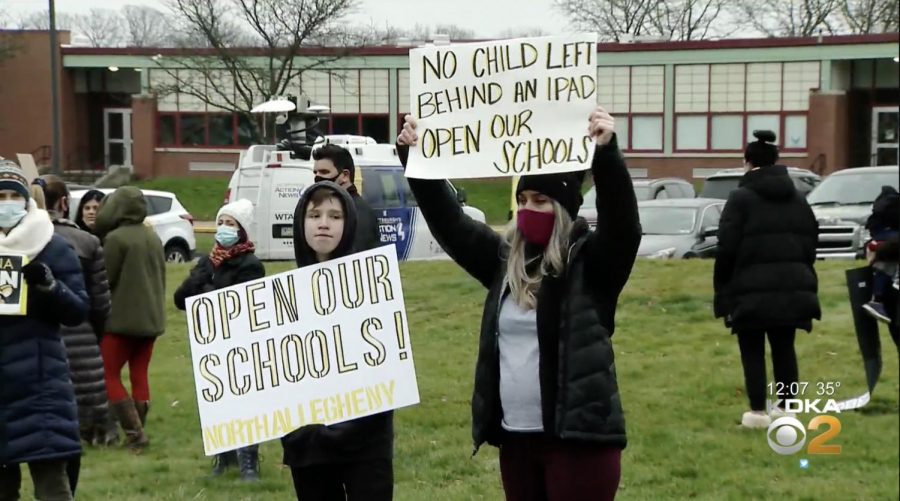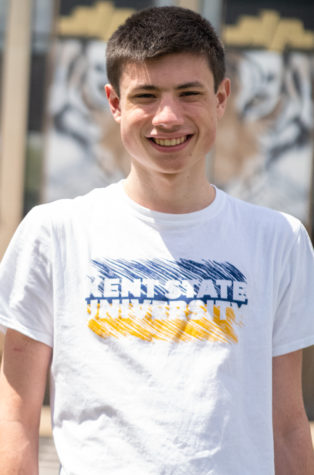A Plea for Reopening
When North Allegheny went fully remote on Monday, parents and students gathered in protest outside of NAI and the Central Administrative Offices.
On Monday, over a dozen parents and students came together to protest the extension of remote learning.
December 18, 2020
Last week, North Allegheny announced that all students would be fully remote until January 19th. Grades 6-12 began remote learning on Monday, December 14th, with the rest of the district following suit on December 16th. At the time, there were over 130 total confirmed cases and 340 students and staff quarantined in the district, and, that same day, Allegheny County set a new record for daily cases.
The decision was met with controversy, as a parent-led protest occurred outside North Allegheny Intermediate School and the Central Administrative Offices on Monday. The protest was also, in part, a response to Governor Wolf’s new restrictions that forced suspension of school sports and after-school activities state-wide through January 4th.
The protesters concerns are nothing new, as the quality of remote learning has been questioned since the beginning of the pandemic. It is estimated that millions of students are falling behind because of the learning setting. Studies have shown that the vast majority of students have had issues with social interactions or have experienced academic shortcomings.
The parents and students who protested on Monday are concerned that the latest situation will only worsen matters.
“I think going back after New Year’s Day would be a better idea than what’s planned,” said a NASH senior who asked to remain anonymous. “The protest outside of Central probably won’t do anything, but it’s worth a shot.”
Despite the fact many families in the community wish for a return in-person instruction, others do not think the risks outweigh the benefits.
“Although I would prefer to be in school, personally, I don’t want to risk getting COVID,” senior Roman Sciote said. “I think we should work on ways to improve remote learning, and the new Wellness Wednesday is a great start to that.”
Wellness Wednesdays were introduced this week, offering students and teachers a reverse two-hour delay schedule to meet one-on-one or engage in wellness activities in the afternoon.
For the protesters and their supporters, however, attending in-person instruction goes further than just education. Children and adolescents benefit greatly from social interactions stemming from school.
Parent Caitlin Randall told KDKA that she has seen her child struggle without these interactions.
“(Her first grader is) like every other child bring ripped out of school,” Randall said. “Not being able to see her friends. Not with a teacher and stuck in their bedroom.”
Despite such concerns, however, some students have seen an improvement in their health during remote instruction.
“I like the remote learning,” NASH senior Josh Bailey said. “The extra hour of sleep I get from not having to wake up in the morning is fantastic.”
The first vaccines for COVID-19 have been distributed and administered across the country, and many are now anticipating the beginning of the end of the pandemic. The goal of returning to school and overall normalcy is at a premium, and widely distributed vaccine could be the solution.
However, the country is at least four to six months away from that reality, and the ability to conduct proper learning is imperative until that point. Many are hopeful that students will be able to finish the school year in person.
“If the vaccine could be distributed quick enough for a safe return, I would be excited to go back to school,” Sciote said.













